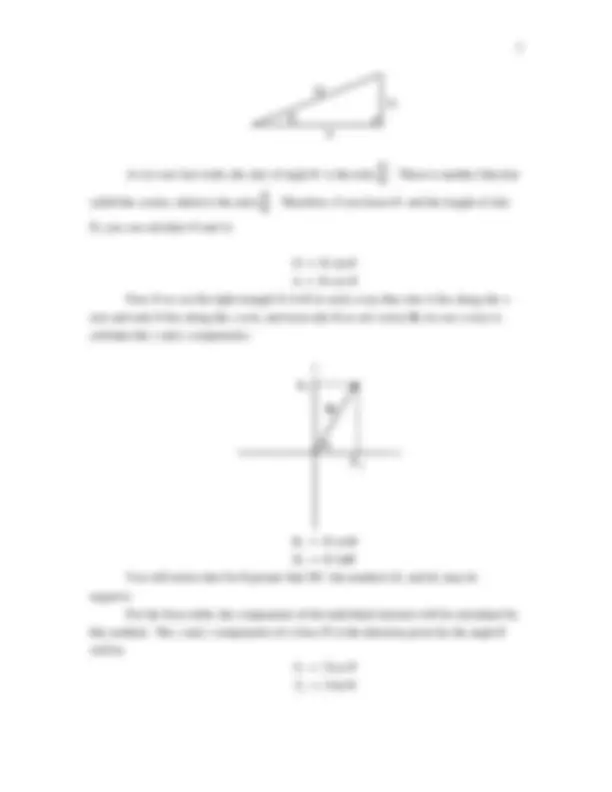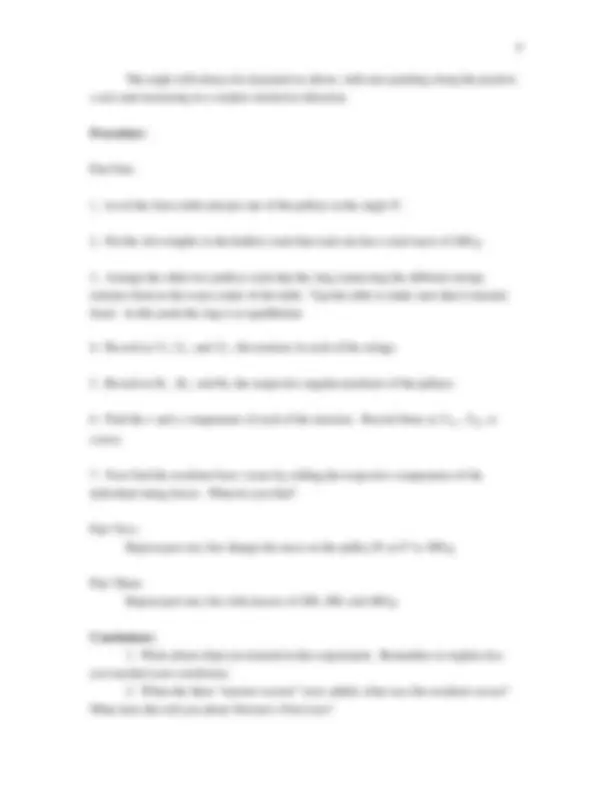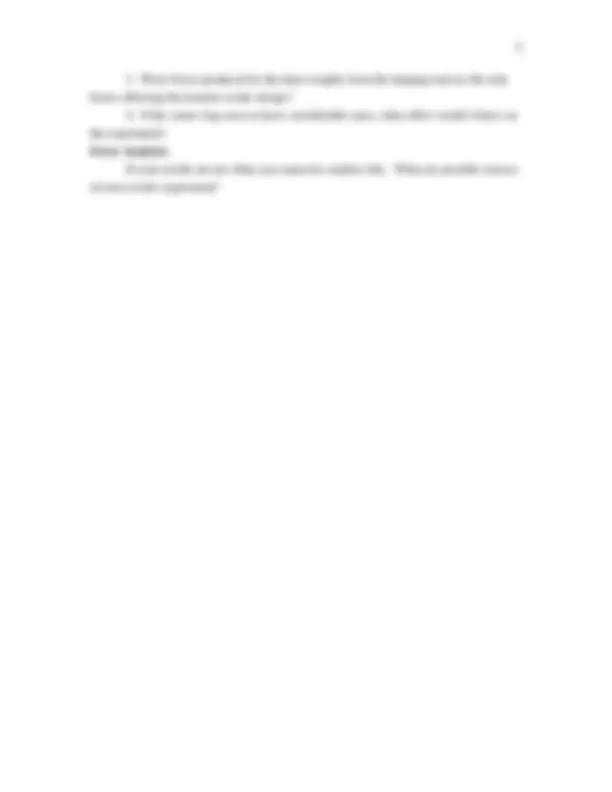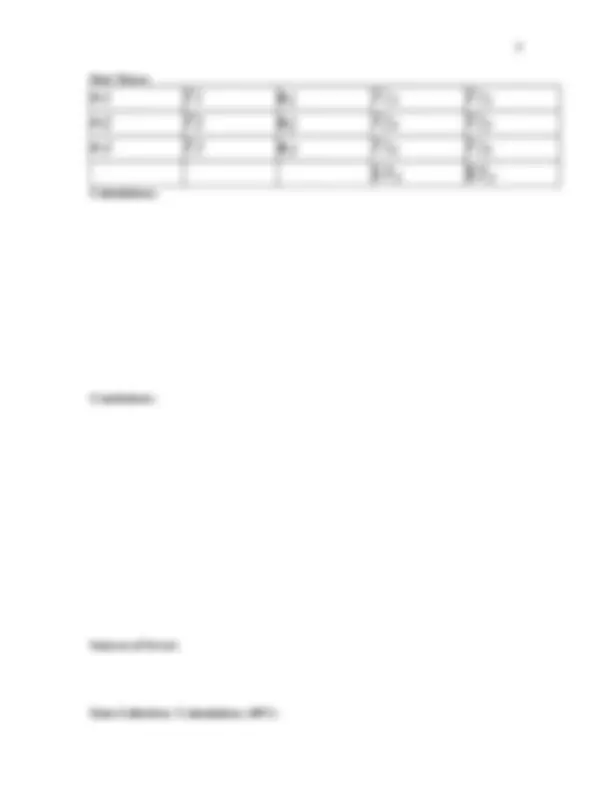








Study with the several resources on Docsity

Earn points by helping other students or get them with a premium plan


Prepare for your exams
Study with the several resources on Docsity

Earn points to download
Earn points by helping other students or get them with a premium plan
Community
Ask the community for help and clear up your study doubts
Discover the best universities in your country according to Docsity users
Free resources
Download our free guides on studying techniques, anxiety management strategies, and thesis advice from Docsity tutors
The Force Table is a simple tool for demonstrating Newton’s First Law and the vector nature of forces
Typology: Lab Reports
1 / 11

This page cannot be seen from the preview
Don't miss anything!







Introduction: "The Force Table" is a simple tool for demonstrating Newton’s First Law and the vector nature of forces. This tool is based on the principle of “equilibrium”. An object is said to be in equilibrium when there is no net force acting on it. An object with no net force acting on it has no acceleration. By using simple weights, pulleys and strings placed around a circular table, several forces can be applied to an object located in the center of the table in such a way that the forces exactly cancel each other, leaving the object in equilibrium. (The object will appear to be at rest.) We will use the force table and Newton’s First Law to study the components of the force vector.
Theory: As we saw in the inclined-plane experiment, any vector can be decomposed into several other vectors which, when added together, produce the original vector. This was essential to our study of the inclined plane, where the force we were concerned with was the component of the weight vector which was parallel to the inclined plane. Sometimes, when doing calculations which involve adding several vectors, it is useful to break up the individual vectors into components and then add the components. How could this extra step actually facilitate the solution? Most vectors are given only by their magnitude and direction, with magnitude being some scalar positive number and direction given by some angle. If you are trying to add the vectors using a protractor and ruler by the "parallelogram method", you will have to draw all the vectors, then add them up graphically, one by one, until you have completed the task and with questionable precision in your result. The component method reduces the addition to one step. Furthermore, this step is analytical (adding numbers) rather than graphical (drawing pictures), yielding the best possible precision. In the inclined-plane experiment, the down-hill force was the component of the weight vector which was parallel to the plane. We found this component by multiplying the weight by the sine of the angle of the plane. Now let us consider a more general case.
In the Cartesian coordinate system, a point on the graph is specified by two scalar numbers, x and y. The coordinate x gives the distance and direction along the x-axis , and the coordinate y gives the distance and direction along the y-axis , from the origin to get to the point in question. The absolute value of the coordinate indicates the length along the
axis, while the sign (positive or negative) tells the direction (left or right, up or down) of motion. How can this be used with vectors? Consider the vector R which lies in the x-y plane. If we place the tail of R at the origin, R points away from the origin like the hand of a clock. R also makes some angle θ with the positive x -axis (measured counter-clockwise). The tip of R rests on the Cartesian coordinate ( Rx , Ry ). In fact, Rx and Ry are called the components of the
vector R. Now consider another vector S , its components, and the sum of R and S , the vector T.
y
x
y
x
y
y
x x
θ
Observe that the components of S are negative in this example. The components of the resultant vector T , ( Tx , Ty ) are equal to ( Rx + Sx , Ry + Sy ). Since the length of T is the hypotenuse of a right-triangle with sides of lengths Tx and Ty , the magnitude of T
is:
T = Tx^2 + Ty^2
The convenient thing about the component method is that you only have to add scalar numbers to get the final vector. This really speeds things up when you have more than two vectors to add. But how do you get the components from the magnitude and the angle θ? The force table gives you the angle and the magnitude of the different vectors. How can a vector as such be decomposed into x and y components? Lets look at the right-triangle O-A-H (notation for opposite, adjacent, hypotenuse):
The angle will always be measured as above, with zero pointing along the positive x -axis and increasing in a counter-clockwise direction.
Procedure:
Part One:
cetera.
Part Two: Repeat part one, but change the mass on the pulley #1 at 0° to 300 g.
Part Three: Repeat part one, but with masses of 200, 300, and 400 g.
Conclusions:
Name:__________________________Section: _________
Abstract:
Part One:
Calculations:
Part Two:
Calculations:
Abstract / Conclusions (40%) Error Analysis (20%)
Grade: